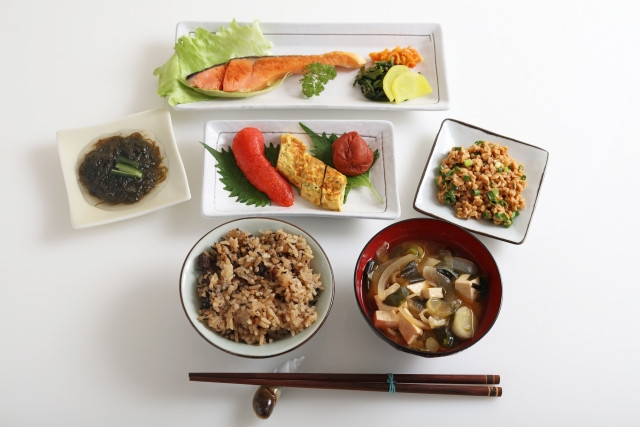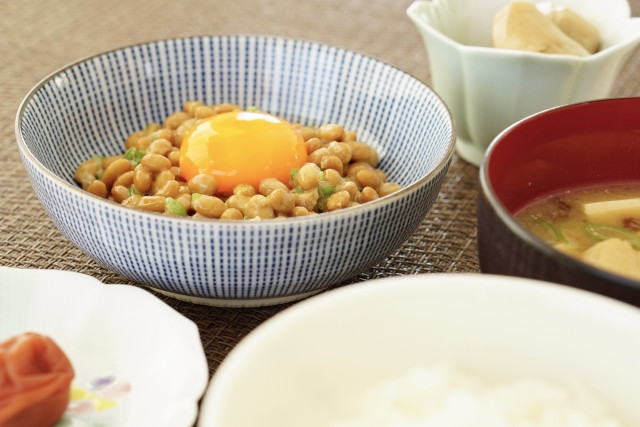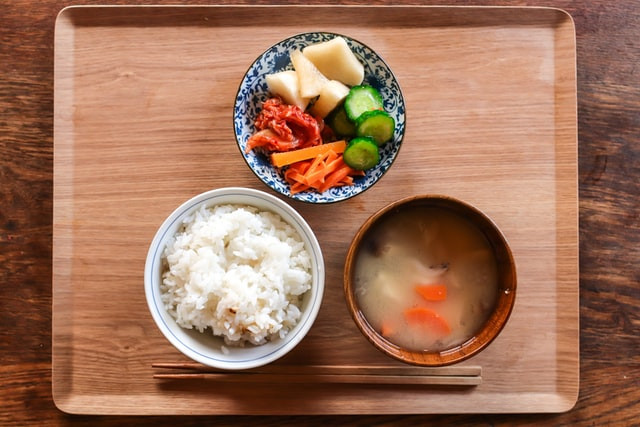Japan is known for its sumptuous dishes, and Japanese breakfasts are one of the most mouthwatering healthy meals that anyone can ever taste! It will surely impress first-time tourists who cannot wait to taste an authentic and nutritious meal from preparation to serving a Japanese breakfast.
Table of Contents
- History of Traditional Japanese Breakfast
- How to Prepare a Typical Healthy Japanese Breakfast
- Best Places to Eat Japanese Breakfast
- Start Your Day Healthy
History of Traditional Japanese Breakfast
Breakfast is considered the most important meal of the day in most countries around the globe. Nutritionists always emphasize that breakfasts are essential for a person’s physiological needs. Many people would agree that having a good breakfast can help a person to function well and have a productive day at school or work.
When talking about a complete and healthy breakfast, Japanese breakfast would be an excellent example of that. Many people are interested or curious about the typical Japanese breakfast because it has distinct characteristics compared to breakfast meals in other countries. Many people, especially tourists, want to taste an authentic Japanese breakfast. If this is you, then this article is for you!
Evolution of Breakfast in Japan
Despite its popularity, did you know that eating breakfast is not innate in Japan? Yes, you read it right. People in Japan in earlier times were not accustomed to eating breakfast. The standard in Japan before was having two meals per day only, which were eaten in mid-morning to mid-day and in the evening respectively.
It’s said it was only around 1688-1704, also known as the Genroku era during the Edo Period, when the Japanese started to practice eating three meals a day. Major reasons behind this change include more affordable food found outdoors and the necessity of an extra meal to survive a longer day after the availability of oil lamps meant not relying on the sun to set work hours. This means that the history of eating breakfast in Japan, despite being normal nowadays, is only relatively recent in Japanese history.
Common Japanese Breakfast

In Japan, breakfast is all about being complete and packed with nutrition. A typical Japanese breakfast usually consists of steamed rice, meat (or fish), soup, fruits, and vegetables. These foods are great sources of carbohydrates, proteins, vitamins, and minerals that can provide sustained energy and improve overall health.
What Sets Japanese Breakfast Apart from Western Breakfast
Most Western countries are not that particular when it comes to breakfast. Some are fine with just a cup of coffee or a bowl of oats or cereals. Others might consider grabbing some bread, sandwich, or an apple and they are ready to go. Some would love to prepare pancakes while others would just skip breakfast altogether.
In Japan, however, breakfast is considered as an essential before starting the day. And a Japanese breakfast is not only eaten to fill your tummies, but it is consumed for health and wellness. Another unique characteristic of a Japanese breakfast is that it can also be eaten during lunch or dinner. Unlike other countries where their breakfast meal is usually “not suited” for other meals of the day, or at least it would be obvious if a person is eating breakfast foods at a different meal, the components of a Japanese breakfast are still applicable for lunch and dinner. Meaning to say, breakfast foods in Japan can still be eaten at any time of the day.
Writer's Pick
How to Prepare a Typical Healthy Japanese Breakfast

So, are you interested in trying out this healthy way of eating breakfast? Do you want to experience a more fulfilling and satisfying breakfast meal? Why not prepare a Japanese-inspired breakfast at your own home for yourself or your family? Here is a quick guide on the important components of a typical healthy Japanese breakfast and how to prepare them.
Main Components of a Japanese Breakfast
Take note of the following dishes and make sure to buy and prepare them all to achieve a Japanese-style breakfast in the luxury of your own home:
-
Gohan (Steamed Rice)
As the main source of carbohydrates of Japanese cuisine, rice is also a key element of a Japanese breakfast. You can use either white rice or brown rice depending on your preference. A bowl of steamed rice can also be served with katsuobushi (fish shavings or flakes), pickled vegetables, or other seasonings to add texture and flavor. You can choose to have rice porridge as well instead of steamed rice. Another popular version is tamago-kake gohan, which will be discussed under eggs.
-
Miso Soup
A Japanese breakfast can be summarized into “one soup, three dishes”. Yes, there should always be a comforting bowl of soup in your breakfast. The most common and favorite soup for breakfast in Japan is the miso soup. It is made from a fermented soybean paste and a dashi broth. To make it more flavorful, you can add green onions, tofu, wakame seaweed, Japanese mushrooms, and more. You can make miso soup from scratch but there you can also buy instant miso soups for less hassle and preparation time. A popular variation is tonjiru, which is pork based miso soup.

-
Natto
Natto is made from fermented soybean and it is a staple in a Japanese breakfast because of its high source of proteins. Often topped on a bowl of rice, natto brings extra flavor and kick to your breakfast especially when seasoned with soy sauce and other ingredients. Asian and Japanese stores also sell ready-to-eat natto for your convenience. However, this is one food that non-Japanese, and even Japanese are very picky about - those who love it can have it almost every day, whereas people who hate it often can’t stand even the smell. It’s worth a try to see which you are!
-
Yakizakana (Grilled Fish)
As an archipelago, Japan is rich in seafoods and fish is the most popular among them. Fish are a great source of protein and are a staple in a Japanese breakfast. Any type of fish can be used for breakfast and it can either be broiled or grilled. Salmon and mackerel are the two favorite choices when it comes to fish for Japanese breakfasts.

-
Tsukemono (Pickled Vegetables)
One unique component of Japanese breakfast is the presence of vegetables. Japanese believe that adding vegetables in your breakfast ensures a great and healthy start of the day. Tsukemono is a pickled vegetable dish that is usually made with one or several of the following: carrots, radishes, cucumbers, plums for umeboshi and more.
-
Kobachi (Vegetable Side Dishes)
Aside from pickled vegetables, it is not unusual to see other vegetable side dishes served in small portions in a Japanese breakfast table. A small fresh vegetable salad, or a spinach salad seasoned with sesame, sugar, salt and soy sauce (called ohitashi) as side dishes are good examples of a kobachi.
-
Nori
A perfect partner for rice is nori or fried seaweed. You can get it plain, or lightly salted or seasoned. It provides a pleasant flavor to plain rice that makes it more appealing. This seaweed and rice tandem is a common Japanese breakfast must-have.
-
Egg
Your Japanese breakfast will never be complete without the superfood, egg. You can top raw eggs on your steamed rice, add some seasonings like soy sauce, and you will now have a palatable rice bowl called tamago kake gohan. If you are not into raw eggs, you can cook the eggs into a rolled omelet (called tamagoyaki).
The Preparation
Are you overwhelmed by the numerous components of a Japanese breakfast? Don’t worry! You don’t need to have all those dishes. Try to keep it simple as long as your breakfast is nutritious. First, rice should always be present as a source of carbohydrates. Second, a bowl of soup is necessary. Third for proteins, you can just choose one among fish, egg, and fermented soybean. Lastly, you can also have one side dish only, it could either be pickled or other vegetable dishes.
Best Places to Eat Japanese Breakfast

If you have no time to prepare a Japanese breakfast by yourself, going to Japan and trying them there is a great way to try it. If you stay in a traditional Japanese ryokan or inn that comes with a breakfast, you can almost certainly have a Japanese breakfast.
And even if you stay in a western style hotel, even business hotels that offer breakfast, many of them have both Japanese and western options for their breakfast buffets and meals to accommodate both kinds of preferences.
And if you can afford it, here are some of the best hotels where you can experience an authentic but slightly pricey Japanese breakfast meal:
Aside from these fancy and luxurious hotels, you can look for other restaurants in different parts of Japan that also offer an authentic Japanese breakfast experience.
Start Your Day Healthy
There is no greater way to start a day than to eat a delicious and healthy breakfast that can give you energy throughout the day. You might be content with what your typical breakfast has, but why don’t you try to level it up and be healthier? Prepare for yourself a Japanese-style breakfast and it will change your life. Your day will become brighter and your body will become stronger with all the nutrition that you can get in your meal. Don’t miss out on the opportunity as well to try authentic Japanese breakfast food the next time you visit here in Japan.


































